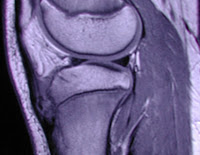

Emphysema is a chronic obstructive pulmonary disease that is progressive and irreversible. When a patient develops emphysema, the air literally becomes trapped within the lungs because the alveoli (where CO2 is exchanged for O2) starts to collapse. Patients also develop a "barrel chest", which can be seen on a general PA chest x-ray. This "barrel chest" is formed by the rounding of the costophrenic angles.
Some other symptoms may include very short and rapid breaths, shortness of breath, chest pain/tightness, coughing, and fatigue.
My grandfather was a wonderful man, but he had a bad habit. He smoked for years and years. He eventually developed emphysema and his life was shortened after catching pneumonia for a second time within one year. He was in and out of intensive care that year and for his last 5 years he had to carry an oxygen tank with him every where he went. He told my grandmother to "pull the plug" if he ever had to go back under the ventilator. He definitely did not want to live his life like that, and to be honest, who would?
In April of 2004, I went to visit my grandfather in the hospital. I was actually the last grandchild he spoke with before he went into a coma. He told me he was so proud of my sister and I for going to college, being great, honest people, and for not ever smoking. I wish that I could have done more for him and I really wish I would have spent more time with him before he passed away. He was in a lot of pain there at the end! His kidneys failed after he went into a coma, so my grandmother decided it was best to take him off the ventilator. Smoking is such an awful thing to do to your body. I seriously wish everyone would understand that and quit!
References: www.mayoclinic.com, www.ctsnet.org, www.mevis-research.de









